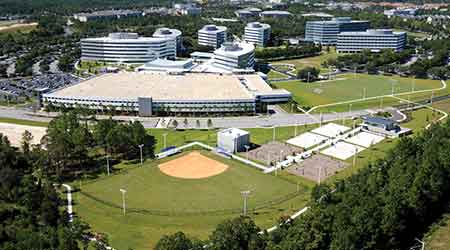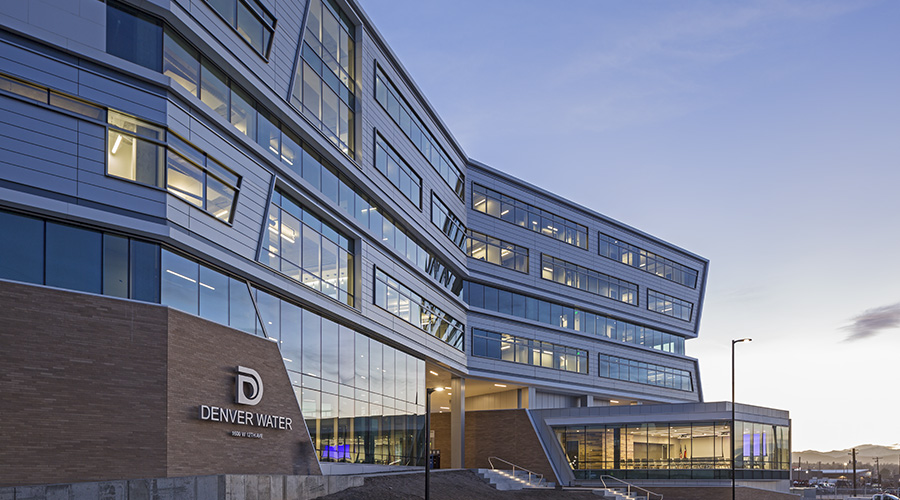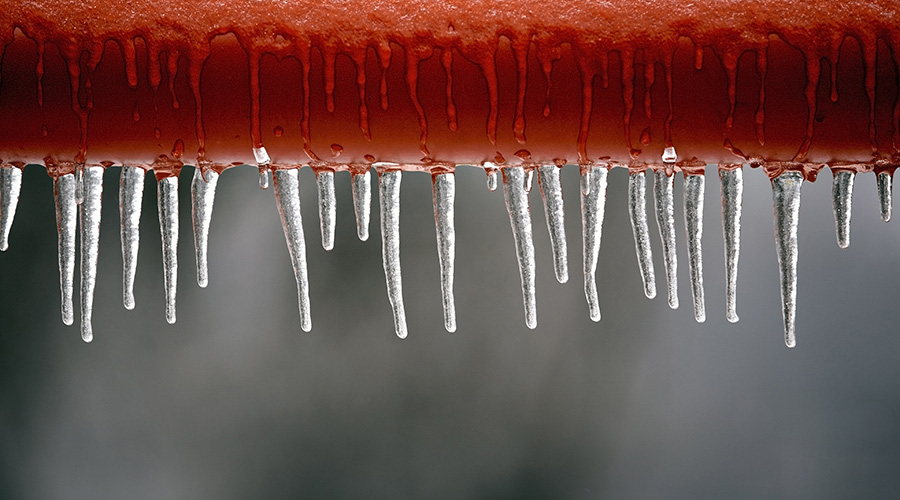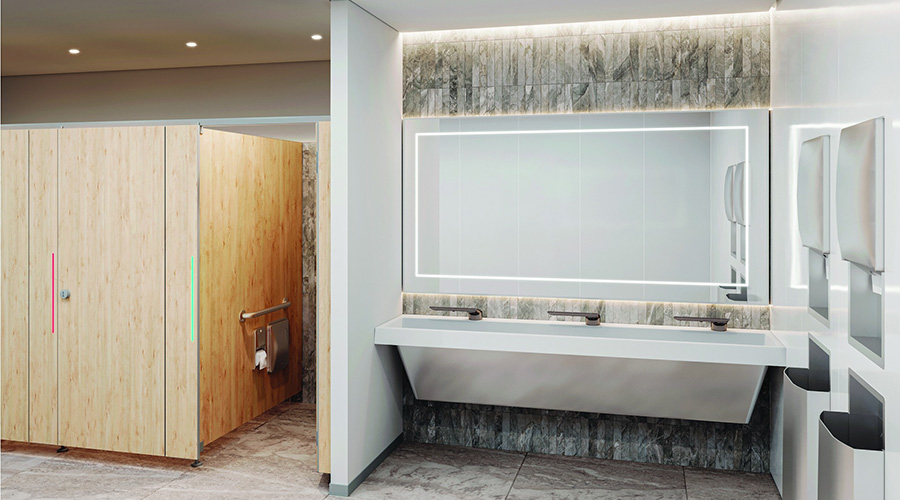 Restroom renovations throughout facilities on Florida Blue's Jacksonville campus include the installation of about 500 low-flow toilets in more than 100 restrooms.
Restroom renovations throughout facilities on Florida Blue's Jacksonville campus include the installation of about 500 low-flow toilets in more than 100 restrooms.Implementing Water Saving Strategies
By implementing several water reducing strategies on its 33-acre campus, Florida Blue has been able to reduce its annual water usage by 151 million gallons.
Watching the water
Florida Blue uses several strategies to reduce water use on its 33 acres of landscaped turf. The first strategies is to reuse.
“When the campus was originally built, it was designed to capture water runoff from the roofs of the buildings, the on-campus property and parking areas in retention ponds,” Peacock says. “The retention ponds water is used by the irrigation system to reuse the water for irrigation purposes.”
The organization also partners with Jacksonville Electrical Authority (JEA) to provide reclaimed water in the retention ponds to be used for irrigation. The landscapes use about 70-80 million gallons annually. As a result of the arrangement, Florida Blue does not use any city water or draw from the Florida aquifer for landscape irrigation.
“All of the drainage on the property is directed to retention ponds,” he says. “The center retention pond is actually connected through piping to a series of retention ponds that are not only on our campus but run through a business park that we’re in. On one of the properties in the business park, JEA added a way to fill it with reclaimed water. So everything that we use for irrigation is either runoff that we’ve collected or water that’s been added by JEA for reclaim.”
The second strategy involves the plants in its landscapes. Florida Blue selects materials that are drought tolerant and minimize the need for excessive irrigation.
“Over the years, we’ve been trying to re-establish ourselves as a Florida friendly landscape,” says David Bennett, the manager overseeing landscape work on the campus. “So we use drought-tolerant grasses whenever possible. We’ve also started using micro-spray and drip irrigation when we can. So far, we’ve cut out about 2 acres of St. Augustine sod, which requires a lot of water, and gone back to drought-tolerant grasses and landscapes.”
Selecting drought-tolerant plants has delivered two benefits to the organization
“One is water consumption, but the biggest thing is we cut back on pesticide and herbicide use,” Bennett says. The organization also uses chemicals to achieve a separate but related sustainability goal.
“We treat all of our stormwater runoff ponds on our property,” Bennett says. “We use a chemical that doesn’t affect aquatic life but that colors the water. We’re trying to see if we can stop a lot of the evaporation so we don’t draw down too far or cause any other damage.
“Using the dye cuts back on the sun and cuts down on the grasses that grow up from the bottom of the ponds. As a result, we can cut back on chemical use in ponds.”
“Our landscapes are always evolving,” Bennett says. “We’re constantly making changes. We’ve got a lot of mature plant materials, and we’re going to be shutting the water off to them. The rule of thumb is to get new plant material to grow in and then start backing up on the water source. We’re doing that wherever we can take St. Augustine (grass) out.”
Slowing the flow
The third leg of Florida Blue’s tripod of water conservation involves the restrooms throughout the Jacksonville campus.
“Florida Blue is performing bathroom renovations on the corporate campus over the next three years,” Peacock says. “These renovations include installation of low-flow toilets in each of the restrooms. We have over 100 restrooms, each containing five toilets.” The upgrades are part of projects dictated in part by the age of some of the company’s Jacksonville facilities.
“Once you hit the 20-year mark, the buildings start needing renovations,” he says. “We started on that process this year. We’re renovating one building this year and two buildings a year for the next two to three years.
“As part of that process, we’re renovating the bathrooms. We’re tearing them all out and replacing all of the piping systems, and we’re putting in low-flow toilets to reduce our water usage. I haven’t done the calculations, but they will use less than half of the water they previously used.”
The low-flow toilets are just the most recent of the organization’s plumbing fixture upgrades.
“We already have auto-flush sensors on all of our urinals and low-flow devices on our sinks,” he says.” We already were doing pretty well. The only thing left to do was install low-flow toilets.”
Determining the success of each element of the organization’s water conservation efforts extended well beyond installation.
“Once (completed), you definitely have to keep monitoring to make sure you get all the savings you expected,” Peacock says. “Early on, we had issues with the performance of some of our water softeners. If we hadn’t been monitoring them closely, we would not have realized all the savings we had expected.”
Related Topics:













